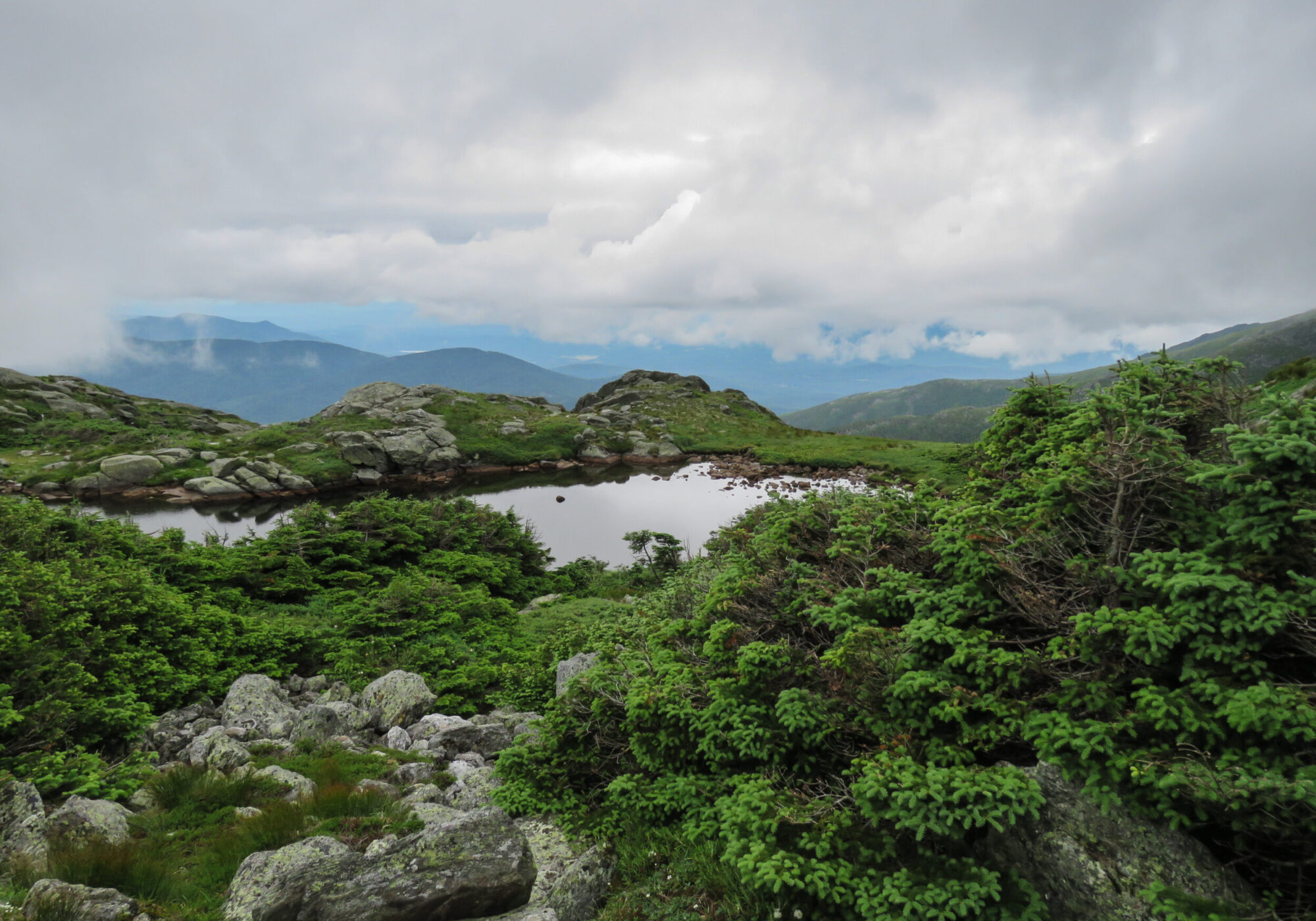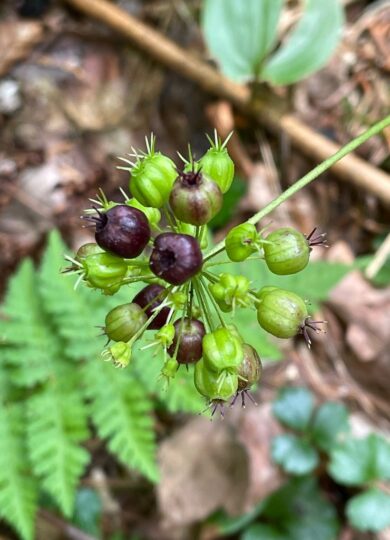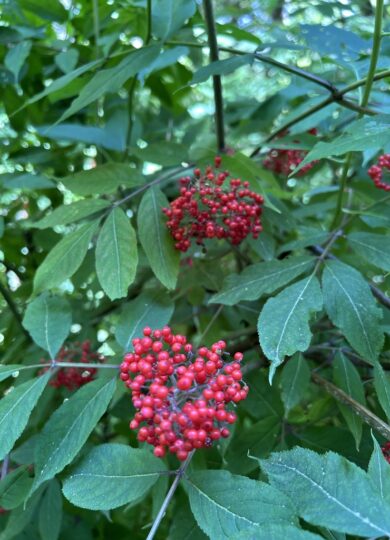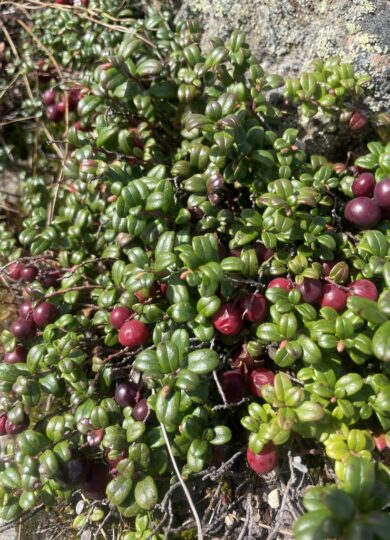

In August, birding efforts are fruitful if you know where to look. Berry-bearing trees and shrubs feed thrushes, waxwings, and bluebirds—even some warblers, while migrating shorebirds pause along the gravel bars and mudflats lining the shores of Lake Champlain. Where else can you see gems of summer’s end? Take a trip to one of the many public lands that make the woods and waters of northern New England accessible to all.
By Megan Massa with contributions from Jason Hill
By the beginning of August, the first waves of southbound shorebirds are already on the wing. Most of our migrating shorebird species spent the brief Arctic summer breeding in the tundra, where chicks are camouflaged against lichen and moss.
Unlike the urgent burst of spring, fall migration is a much longer affair, starting as early as July and lasting until mid-November. Shorebirds hold the global records for longest nonstop migratory flights—one of VCE’s tagged Upland Sandpipers flew for four days straight! Some of the species moving through Vermont are headed as far south as Tierra del Fuego, at the southern tip of South America.
These athletic feats demand a lot of energy. To refuel, shorebirds need to pause and replenish their depleted bodies at “stopover” sites that are rich in invertebrates. The classic example is coastal mudflats, but shorebirds can use many other habitats on stopover. Even forested, landlocked Vermont is host to flooded fields, sod farms, dam drawdowns, livestock ponds, and lakeshores—shorebirds can appear anywhere there is shallow water and exposed mud.
This month, keep an eye out for…
Local breeders: Spotted and Solitary Sandpipers, American Woodcock, and Wilson’s Snipe
Migrants: Greater and Lesser Yellowlegs, plovers, dowitchers, and “peeps”, a challenging group of small sandpipers to identify, like the Least, Semipalmated, and White-rumped. Shorebird identification can be tricky, but the long migration period means you’ll have weeks to practice.
Rarities: The state-endangered (and possibly extirpated) Upland Sandpiper prefers grasslands to wetlands. During migration, they also use a wide range of habitats, from airports to cereal fields, hayfields, and golf courses. Despite having been lost as a breeder in much of the state, they are occasionally picked up by nocturnal recording stations flying over backyards. The more eyes and ears searching, the more might be found!
Also be on the look out for shorebirds wearing color bands, leg flags, and wing markers. If you spot one, note the species, location, and band colors (e.g., “left leg: blue over red; right leg: metal band only”). Report your findings to the USGS Bird Banding Lab and, if you can find it, the researchers of the species-specific project. Every sighting helps scientists understand patterns in migration and survival and contributes to the conservation of these globe-trotting birds.
By Emily Anderson
Ask a New Englander about their favorite areas to explore nature and see wildlife, and one of two places is bound to make the list: the Green Mountain and White Mountain National Forests in Vermont, New Hampshire, and Maine.
Within the hearts of these treasured forests lie rare swaths of wildland. Some of these areas—like the Pemigewasset Wilderness in the Whites—are part of the National Wilderness Preservation System, a network of pristine, untouched public lands designated by Congress. However, others are protected through the USDA Forest Service’s 2001 Roadless Area Conservation Rule, which restricts new road development and timber harvests in these areas as part of the broader multi-use National Forest system. In the Green Mountain National Forest, 6% of the land is designated as roadless. This proportion is much higher in the White Mountains, where 31% of the National Forest is roadless.
In an increasingly fragmented landscape, roadless areas are ecologically significant components of protected landscapes. A 2020 study found that many roadless areas are often the wildest, least developed lands in both their states and the U.S. and significantly enhance the benefits of existing protected areas. In particular, the study notes the existing body of work showing that habitat “stepping stones” between large tracts of protected land serve as critical movement corridors. Because roadless areas often surround or lie adjacent to other public lands, they can often serve as connectors.
In the Northeast, areas without roads hold high value for forest-interior bird species, such as Scarlet Tanager and Ovenbird, reclusive species like American Marten, and far-ranging species like Fisher. They also play a vital role in reducing the spread of invasive species, which often hitch a ride on logging trucks and easily colonize disturbed landscapes.
While actively managed forests accessed by roads provide a wide range of ecological and societal benefits, those lacking roads offer something different—and difference is the root of biodiversity.
In June, U.S. Secretary of Agriculture Brooke Rollins announced her intention to rescind the Roadless Rule, a process that requires new rulemaking and an opportunity for public comment. Should the USDA decide to follow through, we will all experience significant changes to valuable pieces of our forested landscape.
This month, we’re sharing photos from our biologists and volunteers who’ve been out appreciating some of what our roadless areas and other public lands offer: fresh air, room to roam, peace of mind, and endless recreational opportunities. If you’re looking for a new, beautiful place to explore this August, you couldn’t do better than these locations, however far you make it from the road.





By Dan Lambert
For nearly half the year, greens, browns, and grays dominate the color palette of northern forests, with white blanketing most of the remaining months. Only the foliage season flashes with conspicuous color, lasting just six weeks in a good year. And yet, a closer look beneath the canopy reveals brilliant jewels scattered across the land and calendar.
In January, a frozen drop at the tip of a pine needle refracts the pink light of sunrise. In March, scarlet flowers adorn the twigs of Beaked Hazelnut with tiny tassels that flare to catch yellow grains of pollen. The bright, bell-shaped caps of Orange Mycena spring from decomposing wood each June.
And by August, it’s time for wild berries to continue the cycle of discreet pops of color worth watching for. You can bet that our native birds, migratory and resident species alike, are looking closely as the shortening days slip toward September.
The berries listed above provide vital energy to fuel the fall migration and winter survival of birds that VCE monitors through two flagship projects: Mountain Birdwatch and our long-term bird-banding study on Mount Mansfield. Although their availability, distribution, and energy values vary, all of these berries are ripening now, and you’ll soon see birds flitting around them, adding some variety to their late-summer feast.
If you’re tempted to grab a handful yourself, keep in mind that some berries are toxic to people, and all foraging should observe local restrictions and ethical practices. When it comes to enjoying the woodland jewels ripening this August, the conservative strategy is to share the wealth.